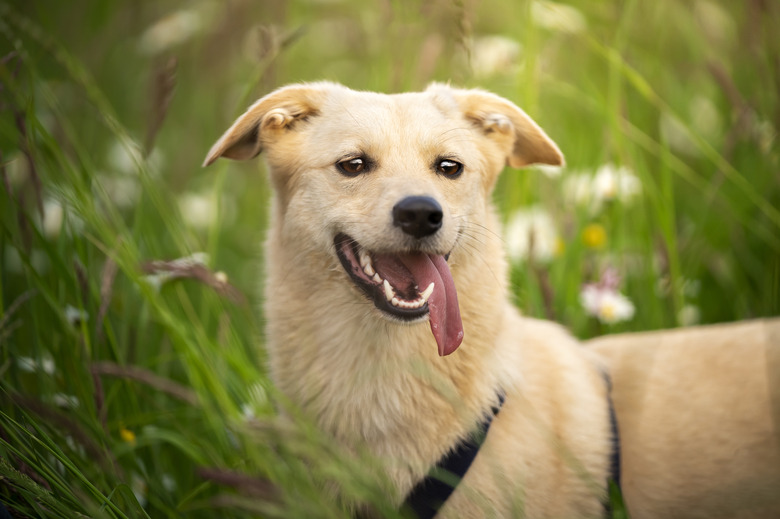What Causes Hair To Grow In A Dog's Mouth?
Dogs' mouths are notoriously strange and slimy places, but most people don't expect to find hair follicles sprouting from them. If your dog has ever opened their mouth to reveal their tongue covered in hairlike growths, you've probably wondered what they are and what could be causing them. Although you should seek a veterinarian's advice if these hairs become more abundant or abnormal, you might be able to determine on your own what is causing the growth on the dog's tongue.
Why is my dog growing “hair” in their mouth?
Why is my dog growing "hair" in their mouth?
Tufts of what seem to be black hairs on your dog's tongue are symptomatic of a condition that's appropriately called "black hairy tongue." Though it may look like hair, this "fur" on the tongue is actually just the result of excessive yeast or bacteria growing in the mouth. The yeast and bacteria build up on the taste buds, also known as papillae, creating a hairy appearance. As a result, the papillae may grow to 15 times their normal length, causing them to look hairlike.
Most dogs have pink tongue papillae, but the yeast and bacterial growth absorb pigment from anything your dog eats and drinks, causing discoloration and creating the illusion of black hair. While it may look very convincing, your dog doesn't have real hair growth on their tongue.
What causes “hair” growth on a dog’s tongue?
What causes "hair" growth on a dog's tongue?
There are all kinds of naturally occurring yeast and bacteria in your dog's mouth. Occasionally, the natural balance may be upset, causing it to overgrow and creating issues such as excessive growth on a dog's tongue. Several factors may increase the amount of yeast or bacteria in a dog's mouth. Feeding your dog human food may be the cause because different yeasts and bacteria are found in human food than are found in dog food. Dogs who have recently undergone radiation therapy to treat cancer or a tumor are also at risk of disrupting their natural balance of bacteria.
Additionally, medications, such as antibiotics, can also affect bacterial growth and result in a "hairy" tongue. A dehydrated dog or one who is not producing enough saliva is also at risk. Another potential cause is poor oral hygiene; a buildup of plaque or tartar could also disrupt the balance of a dog's mouth.
If the hair runs in a line down the center of the dog's tongue, this may be a different condition, called heterotopia, in which hairs do grow on the tongue. There is no known cause for heterotopic hairs. It is a rare condition that should be addressed by a veterinarian.
Preventing "hair" in a dog's mouth
Preventing "hair" in a dog's mouth
Proper oral care for your dog is one great way to prevent black hairy tongue. Brushing your dog's teeth, tongue, and gums daily is the best way to maintain excellent oral hygiene and can also help prevent issues like tooth decay, canine periodontal disease, and more. You can purchase toothbrushes and toothpaste specially formulated for dogs at pet supply stores. Ask the salesperson which toothpaste is best for your dog's breed.
Your DVM may also recommend having your dog's teeth cleaned annually. This prevents plaque and tartar buildup and reduces the risk of tooth decay while preventing bacterial overgrowth in your dog's mouth.
In addition to caring for your dog's oral hygiene, make a habit of cleaning their toys and bowls regularly. This will help reduce the introduction of foreign bacteria that could lead to an imbalance in their mouth.
Finally, ensuring your dog eats a balanced diet is another way to help maintain the normal bacterial balance in your dog's mouth.
The bottom line
The bottom line
If you notice what resembles hair follicles on your dog's tongue, it's most likely the result of bacterial overgrowth building up on your dog's taste buds, causing them to look like hair. While the condition is commonly referred to as black hairy tongue, it's actually just a bacterial imbalance and has nothing to do with hair at all. In most cases, this bacterial imbalance will resolve on its own if you help your dog maintain good oral hygiene.


